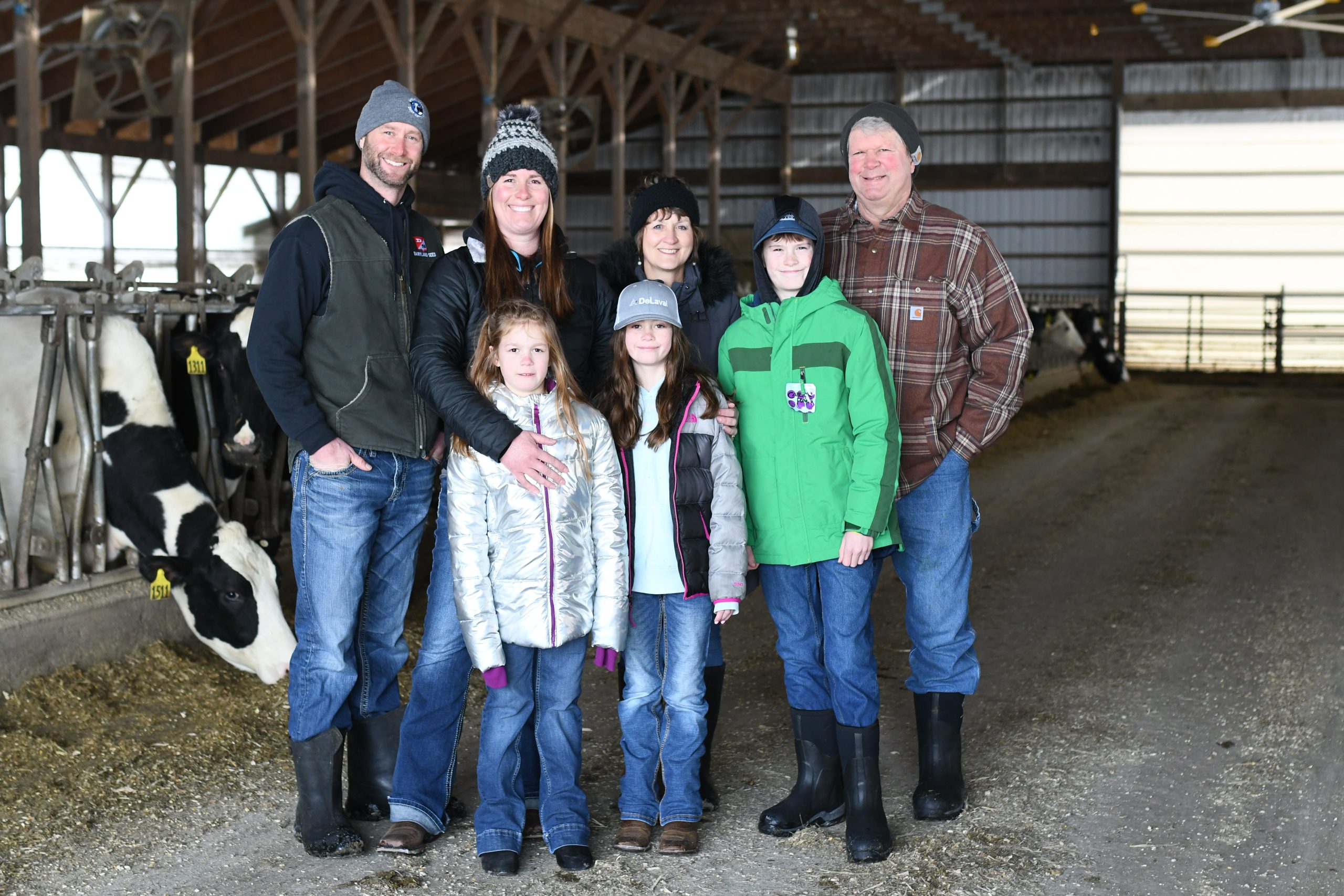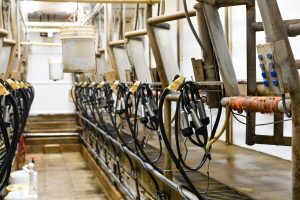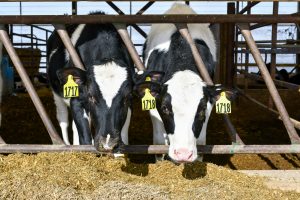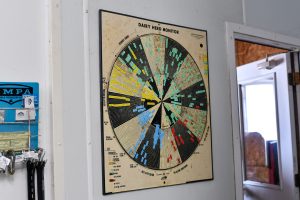Like most dairy farms, Bon-Dale Farms reviews the ordinary details: somatic cell counts in Dairy Herd Improvement Association (DHIA) cow records, herd milk urea nitrogen (MUN) counts in milk quality reports and milk production averages for bulls’ sire summaries. Yet attention to the details and the trends they cause is what has set their milk quality apart from Michigan Milk Producers Association’s membership, earning them the cooperative’s coveted title of Top Quality Award Winner in 2022.

“I always fall back on trends that I see,” Kurt Brinks said, the cow person on Bon-Dale Farms. “We’ve had employees here in the past who we have had scheduled to work Tuesday, Wednesday, Thursday and on Thursday, Friday, Saturday, the somatic cell counts kind of come up and then Sunday, Monday, Tuesday, they’re kind of coming back down. That’s when I know that something’s going on.”
Somatic cell count, a common milk quality indicator, is one of the many details Kurt and his parents, Dale and Bonnie Brinks, pay attention to on their farm in McBain, Michigan. They also encourage their employees to pay attention because milk quality and attention to detail begins in the parlor.

In The Parlor
“We try to get the milkers to pay attention to cow health in the parlor,” Bonnie said. “If they have a question, we’d rather have them catch a cow than let her go and tell you the next morning that they didn’t think she was feeling good last night.”
They set their employees up for success in the way that they manage their farm. In addition to spending a lot of time milking alongside their employees, the Brinks also separate their milking herd into high production and low production groups, allowing employees to easily monitor daily milk production in comparison to cows they should be performing similar with.
“I don’t know how many dairy farmers in my position are in the parlor as much as I am,” Kurt said. As someone who milks at least five times a week, he recognizes that time spent in the parlor is “a very good way to monitor people and how they’re following through on protocols.”
When there is a deviation from proper practices or a change in trends on reports, the Brinks are quick to provide refreshers on training and work alongside their employees to get milk quality and cow health back on track, ensuring they “get the details back where you want them.”
“I don’t necessarily think that there’s a right or wrong procedure to follow in the parlor, but I think cattle are such creatures of habit that if the timing of things isn’t right, then you’re going to start having issues,” Kurt said. “I know you can get udders clean by wiping them faster than I wiped them, but there’s a stimulation aspect there and if that cow isn’t properly stimulated then you aren’t going to get a complete milk out and that allows for the potential that bacteria is built up following the milking.”

In The Barn
The attention to detail also translates to making artificial insemination breeding decisions. From considering leg set to prevent cow slips and falls to evaluating bulls’ milk components and milk production, the Brinks select bulls that are robot ready, despite milking in a traditional double-8 parlor.
“When selecting bulls, I pay quite a bit of attention to udder composition,” Kurt said. “If the udder isn’t right, the cow won’t last you very long, so proper spacing, four udder attachment, and teat length are important. A lot of the bull books have these robot ready cows, which means it’s a nice uddered cow. That’s what I’m going to lean towards whether we have robots or not.”
The attention to their herds’ udders is another reason that Kurt does most of his cow evaluation in the parlor, rather than in the barns. A benefit he recognizes that comes with the size herd he has and his involvement.
“I don’t like disturbing the cow barn a whole lot,” Kurt said. “Getting out in the cow barn and getting cows on their feet, running, walking around when it’s not really necessary is an opportunity for them to get their udders dirty. Cows that are running, can slip and fall and an udder injury of any kind is going to increase your chances of bacteria issues.”

Throughout the Farm
Looking throughout the entire operation, Kurt will be the first to recognize that their success isn’t a result of just one thing, but many different things that affect milk quality. The biggest key to success though is consistency in the parlor and communication between everyone on the farm, including external partners.
“Our feed nutritionist does a really good job and has helped our rations be more fine-tuned than they used to be,” Dale says. “We do a lot of moisture checking, making sure that the dry matter state in our feed is the consistent.” As a result, Kurt recognizes that, “We’re shipping a higher pounds per cow than we ever have.” And Bon-Dale Farm’s components in their milk is also improved.
The small adjustments are part of an ongoing effort to improve their farm’s efficiencies. With an adjustment to genetics to reduce the number of heifer calves and the tweaks in cow nutrition to improve milk production, they’re on a mission to do more with the 210 cows they milk and the 600 acres they operate
“Our goal the last three to five years has been trying to improve our efficiency and make the most out of what we have,” Kurt says. “We really have less cows today than we had a year or two ago, but the cooler is just as full now as it was then. We’re making more milk with fewer cows.”
The improvements in efficiencies and the gradual small changes the Brinks have made overtime may have contributed to their success, but Dale humbly recognizes, “We don’t do anything out of the ordinary, we just pay attention to the details.”
This article was originally published in the March/April 2023 issue of the Milk Messenger. Subscribe »

